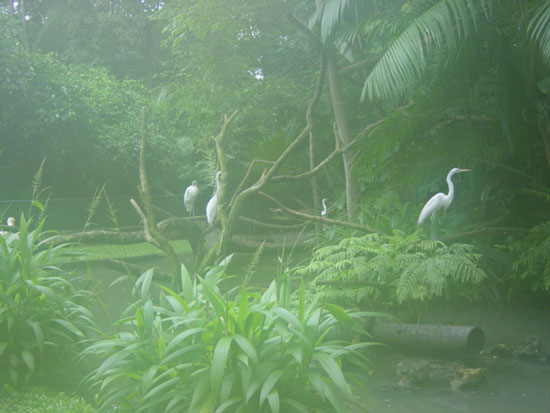Drought Makes Rain Forest Greener

Droughts, paradoxically, seem to make the verdant Amazon rainforest even greener, a new study suggests, giving scientists hope that global warming's effects on the lush South American ecosystem won't be quite as bad as has been predicted.
Many global climate models have predicted that Earth's rising temperatures will cause intense drought in the Amazon basin, eventually leading to the rainforest's collapse into grass-covered savanna, with only a sprinkling of trees.
A widespread drought hit the Amazon in 2005, becoming particularly intense during the regular dry season, which runs from July through September, and providing researchers with an opportunity to test the climate model predictions.
According to the models, a warming scenario would result in the forest being hit by drought. The trees would then respond by reducing both transpiration (the evaporation of water from parts of a plant, especially the leaves) and photosynthesis. This reaction would exacerbate the drought by reducing the amount of water entering the atmosphere, which in turn would reduce precipitation.
These responses should be observable as changes in trees' leaf area and the amount of chlorophyll (both measures of the forest's "greenness") in the forest trees by satellite measurements even for short-term droughts, so Scott Saleska of the University of Arizona and his colleagues looked at these measurements for the period of the drought.
They found that the greenness of the forest actually increased during the drought. The researchers think this could be because trees actually had more access to sunlight and could dig their roots deeper down in the soil to access water.
The researchers say that their results, detailed in the Sept. 21 issue of the journal Science, suggest that the Amazon won't be as directly vulnerable to drought as the climate models predict, but that it will still be vulnerable to deforestation and forest fires, which can increase during droughts.
Sign up for the Live Science daily newsletter now
Get the world’s most fascinating discoveries delivered straight to your inbox.
- Top 10 Ways to Destroy Earth
- Man vs. Nature and the New Meaning of Drought
- What's Your Environmental Footprint?

Andrea Thompson is an associate editor at Scientific American, where she covers sustainability, energy and the environment. Prior to that, she was a senior writer covering climate science at Climate Central and a reporter and editor at Live Science, where she primarily covered Earth science and the environment. She holds a graduate degree in science health and environmental reporting from New York University, as well as a bachelor of science and and masters of science in atmospheric chemistry from the Georgia Institute of Technology.









